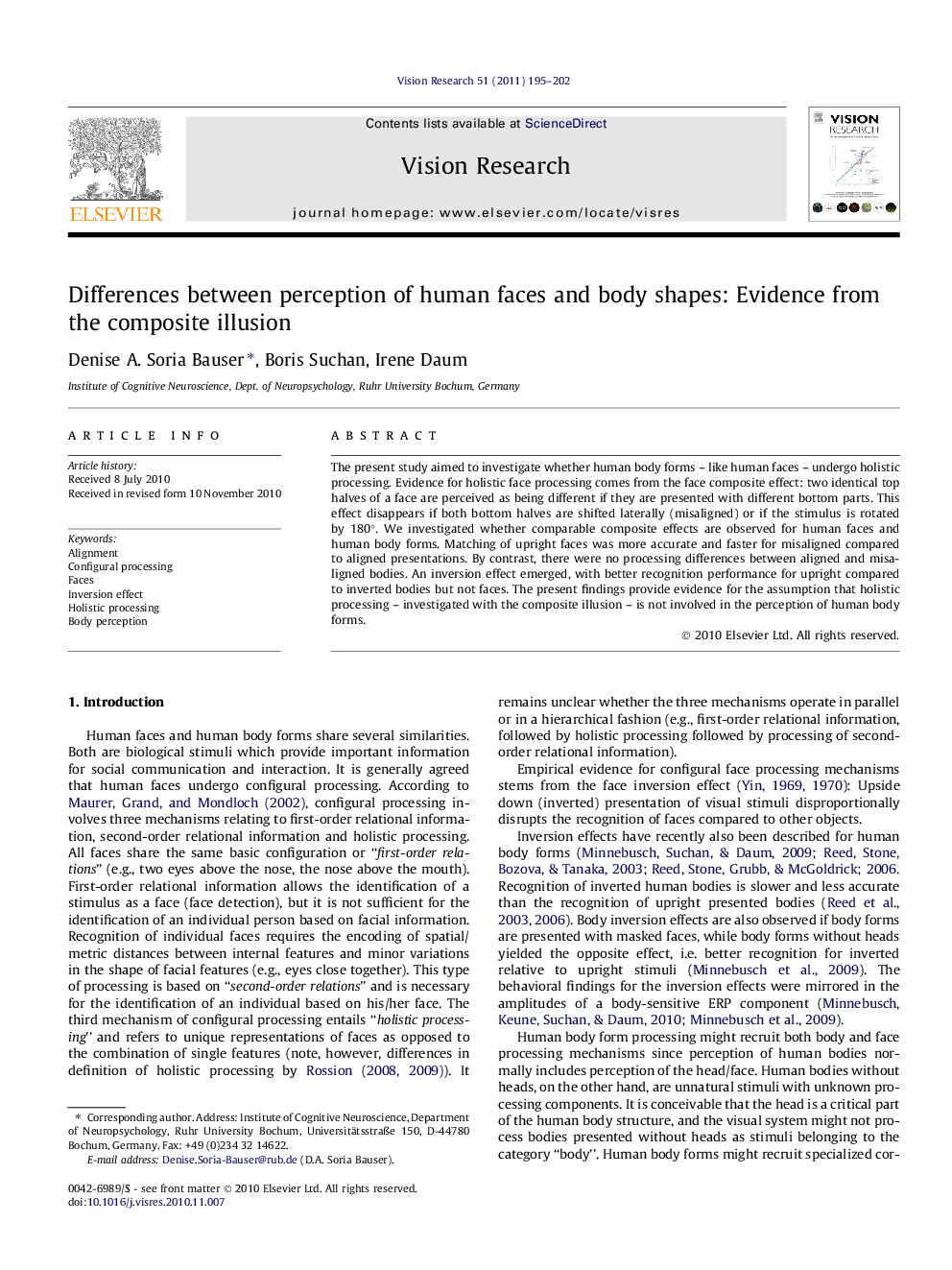| Article ID | Journal | Published Year | Pages | File Type |
|---|---|---|---|---|
| 4034356 | Vision Research | 2011 | 8 Pages |
The present study aimed to investigate whether human body forms – like human faces – undergo holistic processing. Evidence for holistic face processing comes from the face composite effect: two identical top halves of a face are perceived as being different if they are presented with different bottom parts. This effect disappears if both bottom halves are shifted laterally (misaligned) or if the stimulus is rotated by 180°. We investigated whether comparable composite effects are observed for human faces and human body forms. Matching of upright faces was more accurate and faster for misaligned compared to aligned presentations. By contrast, there were no processing differences between aligned and misaligned bodies. An inversion effect emerged, with better recognition performance for upright compared to inverted bodies but not faces. The present findings provide evidence for the assumption that holistic processing – investigated with the composite illusion – is not involved in the perception of human body forms.
Research highlights► Human bodies (with and without heads) are not processed as integrative illustrations. ► Differences between face and body perception; evidence are based on the composite illusion. ► No differences between aligned and misaligned body forms.
